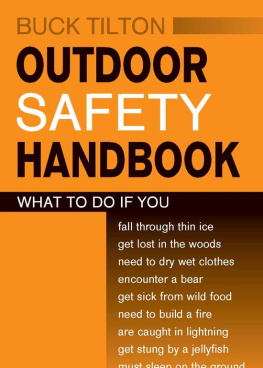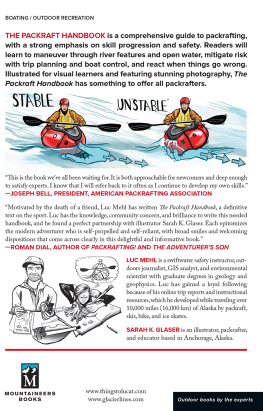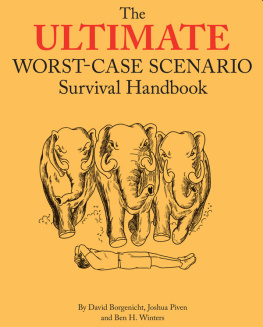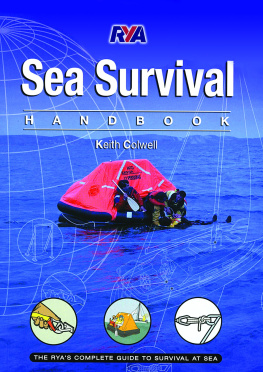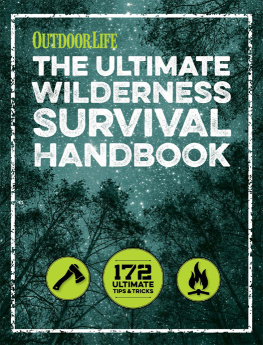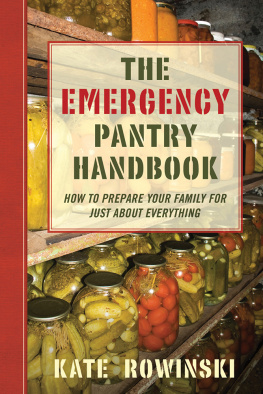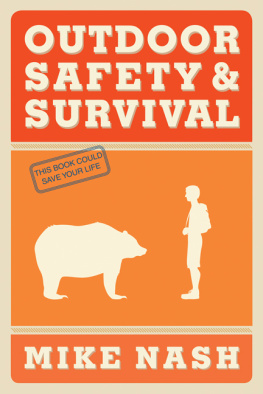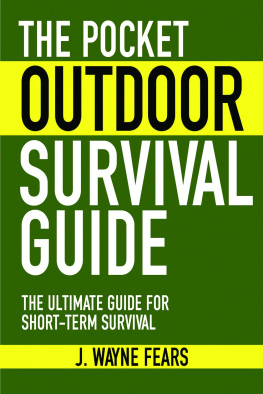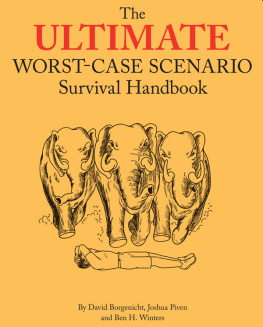
About the Author
Buck Tilton is the cofounder of the National Outdoor Leadership Schools Wilderness Medicine Institute and the author of numerous books on outdoor recreation and wilderness safety, including Medicine for the Backcountry , Backcountry First Aid and Extended Care , and How to Die in the Outdoors . He is also a longtime contributor to Backpacker magazine. He lives in Wyoming.
Discover more Outdoor Sports books, eBooks, and expert advice to plan your next adventure!
From bow hunting to paddling to hiking the Appalachian Trail, Stackpoles Outdoor Sports books give you the tools you need to experience the great outdoors to its fullest.
Visit Stackpole Books Outdoor Sports webpage

GETTING LOST
AND SURVIVAL

PLAN TO GO INTO THE WILDERNESS
Tell a responsible person exactly where you plan to go and when you plan to return. Stick to your plan. Make sure this person knows who to contact to initiate a search-and-rescue operation if you dont return. Gather information about the area you intend to visit. Pack gear and clothing in preparation for the worst possible conditions you could expect to encounter.
Pack the Ten Essentials:
1. Extra clothing
2. Extra food
3. Water and a means to disinfect it
4. Emergency shelter (such as a space blanket)
5. Map and compass
6. First aid kit
7. Flashlight and extra batteries
8. Fire-starting materials (such as matches, lighter, and a candle)
9. Sun protection (such as sunglasses and sunscreen)
10. A knife
With the Ten Essentials, you can safely spend a night out in the wilderness even if you didnt intend to when you left home.

GET LOST IN THE WOODS
Relax. Sit down. Collect your thoughts. Make a thoughtful decision about what to do. If you have a map, try to figure out where you are. With or without a map, you may be able to backtrack to known territory, but do not wander aimlessly. If theres a trail, follow it. If theres no trail, move to higher ground and try to get your bearings. Avoid anything that looks like a shortcut. Rest often. With a group, keep everyone together. Stay as visible as possible.
As you move, mark your path. Pile rocks on the ground in the shape of an arrow or build arrows out of logs and limbs that point in the direction youre traveling. Marks you leave behind may help you if you need to back up, and searchers can also use these pointers. If you cant find known territory, find a safe place to spend the night while there is still plenty of daylight and you arent so panicked you cant think straight. From now on stay put. Its much more diffi-cult for searchers to find a moving target.

GET LOST IN THE MOUNTAINS
Relax. While theres still plenty of daylight, move downhill. Try to get below the tree line where youll find more shelter. But do not attempt to descend dangerous terrain. Search until you find safe routes of descent. Before it gets dark, stop moving. Look for shelter among rocks. In snow, burrow out a hole just big enough for your body. Insulate yourself as much as possible from the ground and cold air. Youll probably have a miserable night, but youll be alive when light returns.
See Get Lost in the Woods on page .

GET LOST IN THE DESERT
Relax. Conserve your sweat, not your water. When youre thirsty, drink. Your body will store what it doesnt immediately need. Find or create shade and stay in it when the sun is out. Limit all physical activity. If you must move short distances, do so only after sunset. If you run out of water, check out the sites of indicator plants such as cottonwoods and tamarisk. Water may be there.
Do not eat anything except juicy fruit or succulent plants. Digesting other foods increases your need for water. Some cacti, when taut and pulpy, may be carefully skinned and chewed for a little moisture, but if the cactus juice tastes bitter, spit it out. Do not smoke or drink alcohol. Do not talk. Breathe through your nose, not your mouth. Do not undress. Loose, baggy clothing reduces sweat loss. Make your site as visible as possible and stay put.
See Get Lost in the Woods on page .

MUST SLEEP ON THE GROUND
Look for the driest ground. Assuming you dont have a sleeping pad, you need to construct a bed that will keep you dry. Its the moisture that can kill you. Pile up dry material: leaves, pine needles, moss, duff from the forest floor. You can break off small, green boughs and lay them with the curved side up. If possible, pile your material 3 or 4 feet deep. You can burrow into the pile and end up with a bed and a blanket. If there is only soggy ground available, look for logs in order to build a raft to sleep on. Where two trees have fallen close together, you can construct a raised platform over soggy ground by bridging the gap between the two trees with branches.

NEED EMERGENCY SHELTER IN THE WOODS
Think small. A small shelter is more easily heated by your body. Conservation of body heat is critical to survivaland that means you must stay as dry as possible. A tarp, space blanket, even a large garbage bag supported by sticks will provide a roof. Look also for shelter under dense, overhanging branches or under a fallen tree. If you build a roof out of bushes, tree limbs, or tall grasses, work from the bottom up and make certain that the higher layers drain precipitation onto the lower layers and not inside the shelter.
Face the shelter away from the wind and close the opposite end. When possible, face the open end toward a reflecting surface, such as a large rock or rocky cliff. A fire between shelter and reflector will heat the shelter. If the ground is not dry, cover it with dry material. If there is nothing else available for a shelter, bury yourself in leaves, pine needles, or other forest debris. With a group, huddle, like spoons in a drawer.

Pile up dry material to insulate yourself from the ground.


